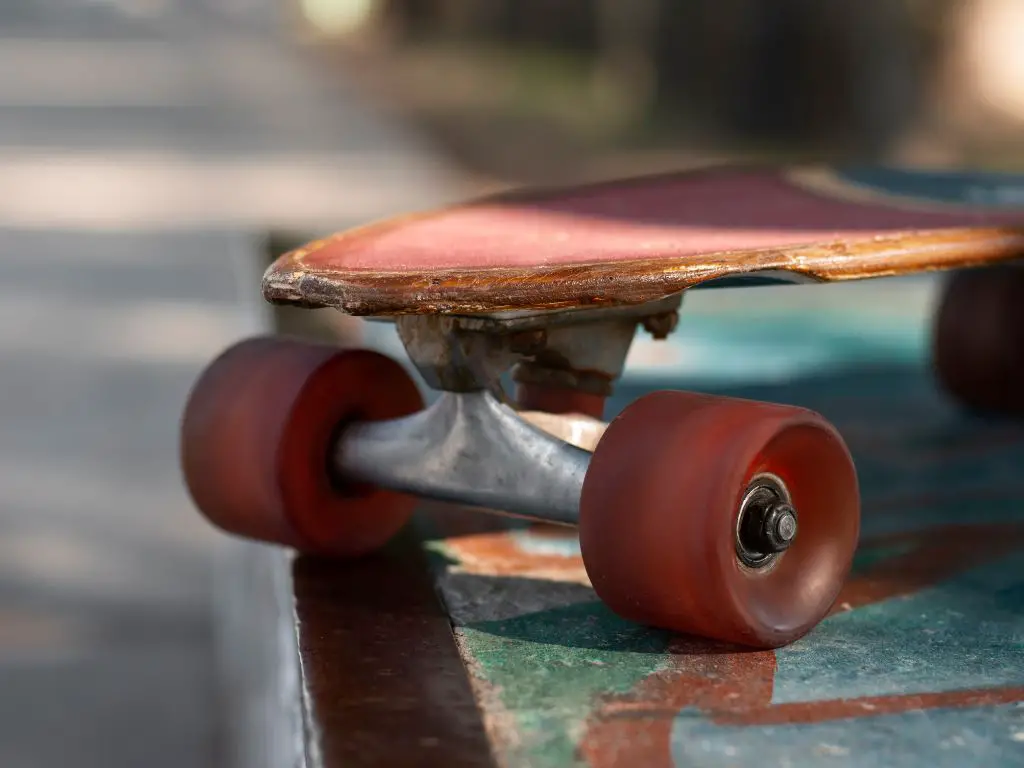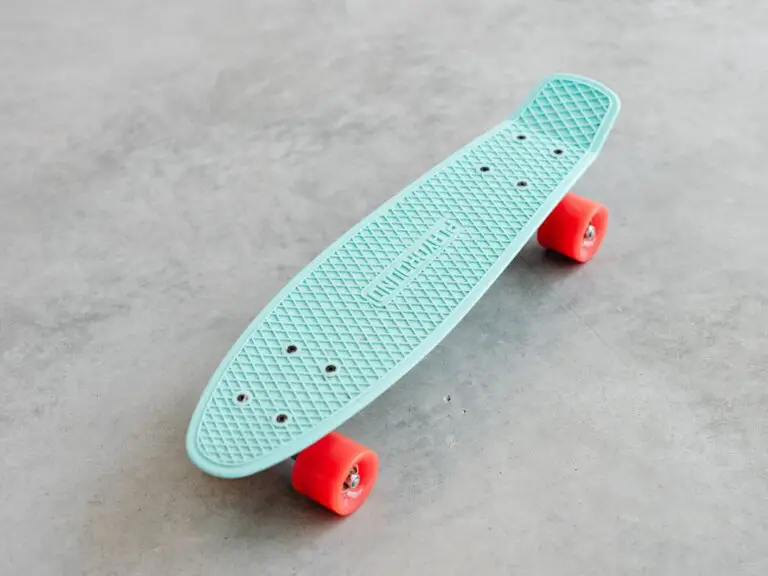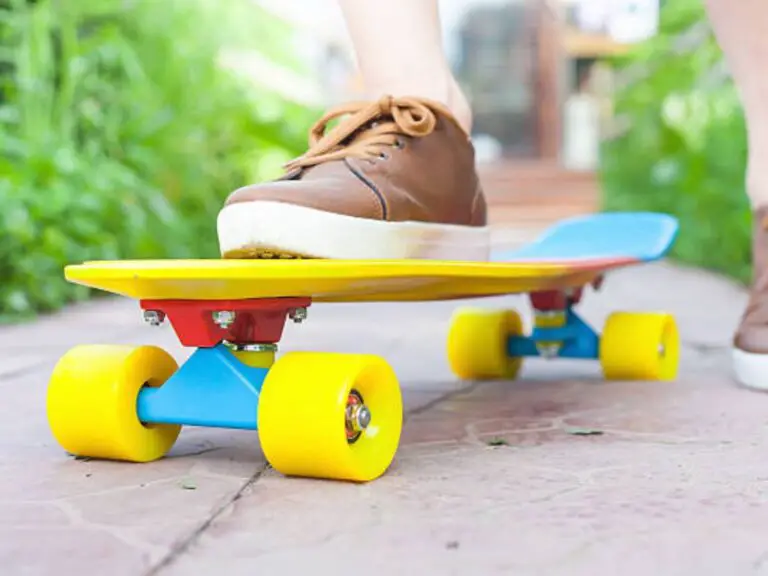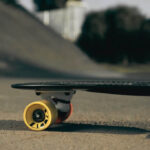We all know the feeling of cruising down the street on a perfectly tuned skateboard. The board glides effortlessly, pops respond with lightning speed, and tricks feel smooth and controlled. But what happens when that awesome feeling starts to fade? Sometimes, the culprit can be hiding right under your feet – worn-out skateboard wheels.
Worn-out wheels don’t just affect your skateboarding swagger; they can also become a safety hazard. This guide will help you identify the signs of worn wheels, explain the dangers of riding with them, and show you how to keep your wheels rolling smoothly and safely. So, grab your board, let’s get started!
Signs Your Skateboard Wheels Are Ready for Retirement
Imagine your skateboard wheels as the trusty tires on your bike. Just like those tires wear down over time, skateboard wheels eventually get smaller, lose their shape, and become less effective. Here’s how to spot the telltale signs that your wheels are nearing the end of their lifespan:
- The Diameter Dwindles: Ever feel like you’re pushing harder to get the same speed? That could be because your wheels have shrunk! As you skate, the urethane (the material your wheels are made of) wears down, reducing their overall diameter. Smaller wheels mean less ground clearance, making it harder to roll over cracks and pebbles, and increasing the risk of wheel bite (when the wheel hits the underside of your board).
- Flat Spots Form: Those primo landings and grinds might feel awesome, but they can also take a toll on your wheels. Flat spots develop when the urethane wears unevenly, creating a bumpy surface. These flat spots can cause vibrations as you roll, making for a less comfortable ride and affecting your balance and control.
- Urethane Says “Uncle”: Urethane, the magic ingredient in your wheels, provides grip, shock absorption, and overall performance. But with constant wear and tear, the urethane can crack, chip, or even chunk off in pieces. Not only does this look rough, but it significantly reduces your grip and makes it harder to control your board, especially when turning or carving.
- Loose Bearings Become a Wobbly Woe: Believe it or not, worn wheels can affect your bearings too. As the urethane wears down, the tight fit between the wheel and the bearing can loosen up. Loose bearings translate to wobbly wheels, making it difficult to maintain control and increasing the risk of falls.

The Dangers of Shredding with Worn-Out Wheels
Sure, riding with slightly worn wheels might not seem like a big deal at first. But trust us, the potential dangers are no joke. Here’s why you should ditch those worn-out wheels before they turn your shred session into a wipeout:
- Control Chaos: Imagine trying to navigate a crowded skatepark with wheels that don’t grip properly. Worn-out urethane means less traction, making it harder to maintain balance, turn sharply, or stop on a dime. This can lead to sketchy situations and increase your chances of taking a tumble.
- Stopping Power Sputters: Ever slammed on the brakes to avoid an unexpected obstacle, only to find yourself rolling right past it? Worn-out wheels often have less stopping power due to their reduced diameter and compromised urethane. This can be especially dangerous in situations where you need to come to a quick stop, like when crossing a street or approaching a downhill section.
- Wheel Woes: The worst-case scenario? A complete wheel blowout. Severely worn wheels with cracks or deep chunks missing are at risk of breaking apart mid-ride. This can cause you to lose control and fall, potentially leading to serious injuries. Nobody wants to deal with a trip to the emergency room after a fun skate session!
Remember, shredding is all about having fun and expressing yourself. But without proper safety gear and equipment, that fun can quickly turn into frustration or even worse. Worn-out wheels are a hidden safety hazard that can be easily avoided by staying vigilant and replacing them when needed.
Factors Affecting the Lifespan of Skateboard Wheels
The lifespan of skateboard wheels can vary depending on several factors. Understanding these factors will help you gauge when it’s time to replace your wheels. Here are the key factors that influence the longevity of your skateboard wheels:
1. Wheel Hardness
The hardness of skateboard wheels is measured on the Shore durometer scale. Harder wheels, typically ranging from 99A to 101A, tend to last longer than softer wheels. However, they sacrifice some grip and shock absorption in exchange for durability. Softer wheels, ranging from 78A to 87A, provide better grip but wear down more quickly.
2. Wheel Quality
The quality of the wheels themselves also plays a significant role in their lifespan. Higher-quality wheels made from durable materials will generally last longer and withstand more wear and tear compared to lower-quality options. Investing in reputable skateboard brands known for their quality can ensure that your wheels last longer.
3. Riding Style and Frequency
Your riding style and frequency of skateboarding sessions can impact how quickly your wheels wear down. If you’re an aggressive skater who frequently performs tricks, slides, and grinds, your wheels will experience more friction and abrasion, leading to faster wear. Conversely, if you primarily cruise or ride on smoother surfaces, your wheels may last longer.
4. Riding Surface
The type of surface you skate on also affects the lifespan of your wheels. Rough and abrasive surfaces, such as concrete and asphalt, can cause faster wear than smooth surfaces like wood or plastic. If you frequently skate on rough terrain, expect your wheels to wear down more quickly.
5. Skateboarder’s Weight
The weight of the skateboarder can impact the wear and tear on the wheels. Heavier riders put more pressure on the wheels, causing them to wear down faster compared to lighter riders. If you’re on the heavier side, you may need to replace your wheels more often to maintain optimal performance.
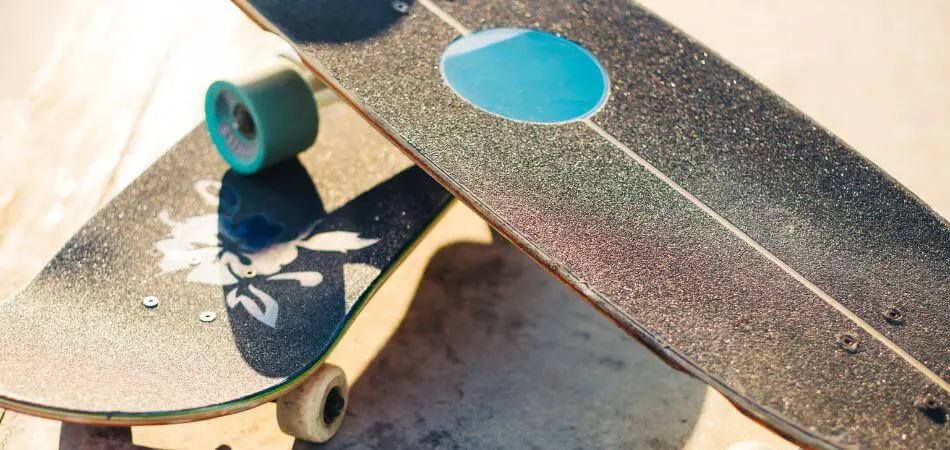
Extending the Life of Your Skateboard Wheels: Ride On, Not Out!
So, how can you keep those wheels rollin’ and avoid a premature retirement party? Here are some simple tips to maximize the lifespan of your skateboard wheels:
- Wheel Rotation is Key: Just like rotating your car tires, regularly rotating your skateboard wheels helps ensure they wear down evenly. Every few sessions, swap the positions of your front and back wheels, or even try an “X” pattern for a more thorough rotation.
- Cleanliness is Next to Smoothness: Dirt, rocks, and debris can accelerate wear and tear on your wheels. Make it a habit to wipe down your wheels with a damp cloth after each skate session. For a deeper clean, you can even remove the wheels and bearings to remove any stubborn grime.
- Terrain Matters: Concrete jungles and smooth skateparks are much kinder to your wheels than rough asphalt or bumpy dirt tracks. If you know you’ll be tackling a particularly abrasive surface, consider using a set of wheels specifically designed for that type of terrain.
By following these simple tips, you can extend the life of your wheels and get the most out of your shred sessions. But remember, there’s a time for everything, even your favorite wheels.
How to Replace Your Skateboard Wheels
Eventually, the time will come when you need to replace your skateboard wheels. While it may seem intimidating at first, replacing your wheels is a straightforward process. Here’s a step-by-step guide on how to replace your skateboard wheels:
- Gather the necessary tools: You’ll need a skate tool or a wrench to remove the nuts on your truck’s axles.
- Remove the old wheels: Use the skate tool or wrench to loosen and remove the nuts on your truck’s axles. Be sure to keep track of the washers and spacers.
- Remove the bearings (optional): If you want to reuse your bearings, carefully remove them from the old wheels. You can use the truck’s axles or a bearing puller tool to gently pop them out.
- Install the new bearings (optional): If you’re using new bearings or need to replace the old ones, place them in the bearing seats of the new wheels. Ensure they are aligned properly and push them in until they sit snugly.
- Place the new wheels on the axles: Slide the new wheels onto the axles, making sure to position them correctly. If you have washers or spacers, reattach them as well.
- Tighten the nuts: Use the skate tool or wrench to tighten the nuts on the axles. Be careful not to overtighten them, as it can hinder the wheels’ ability to spin freely.
- Repeat the process for all four wheels: Follow the same steps for each wheel, ensuring that they are securely attached to the axles.
- Test the wheels: Give your skateboard a test ride to ensure that the new wheels are properly installed and functioning as expected. Make any necessary adjustments if needed.
By following these steps, you can easily replace your skateboard wheels and get back to enjoying your rides with improved performance and safety.
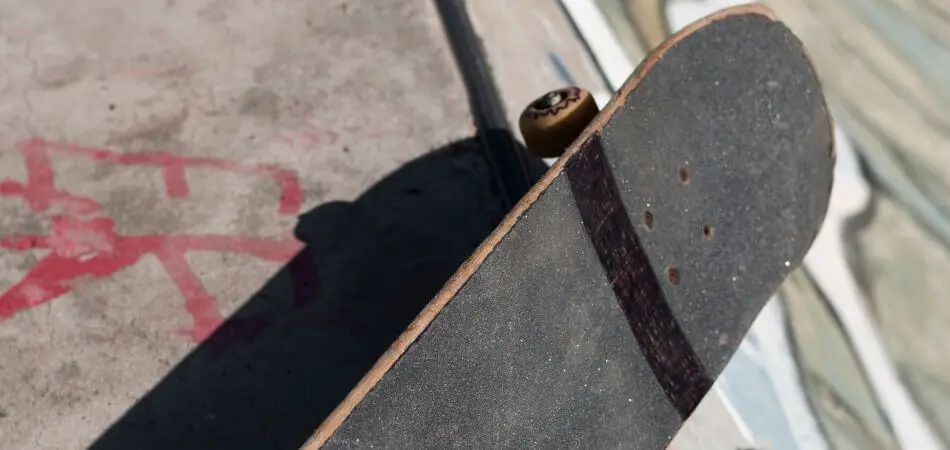
Choosing the Perfect Replacements: A Wheel World Awaits
Now that you’re ready to ditch those worn-out companions, it’s time to find the perfect new set of wheels for your shredding style! The world of skateboard wheels can seem overwhelming, but fear not, skaters! Here’s a quick guide to help you navigate the options:
- Size Matters: Wheel size plays a crucial role in your board’s overall performance. Larger wheels (typically 54mm and above) offer more speed, roll smoother over rough surfaces, and provide better clearance for avoiding wheel bite. Smaller wheels (around 52mm and below) are lighter, offer quicker acceleration and tighter turning, making them ideal for technical street skating.
- Durometer Decisions: Durometer refers to the hardness of the wheel, measured on a scale (usually 70A to 101A). Softer wheels (around 78A-87A) provide more grip and shock absorption, making them perfect for cruising, rough terrain, and vert skating. Harder wheels (around 90A-101A) offer less grip but roll faster and are ideal for smooth surfaces and technical tricks where you want more predictability.
- Style Speaks Volumes: Different skateboarding disciplines often favor specific wheel characteristics. Street skaters might prioritize smaller, harder wheels for responsiveness during flips and grinds. Park skaters might choose larger, softer wheels for better flow and coping stability. Consider your preferred style when making your selection.
Remember, there’s no one-size-fits-all answer when it comes to choosing skateboard wheels. Think about your riding style, the terrain you frequent, and the kind of performance you seek.
Conclusion
By understanding the signs of worn-out wheels, the dangers they pose, and the simple steps to maximize their lifespan and choose the right replacements, you can keep your board rolling smoothly and safely. Remember, replacing worn wheels is an investment in your enjoyment, progression, and most importantly, your safety.
Now get out there, inspect those wheels, and if it’s time to say goodbye, treat yourself to a fresh set! With the perfect wheels under your feet, you can shred with confidence and carve your path to skateboarding glory. Happy skating!
FAQ: Worn-Out Skateboard Wheels
How can I tell if my skateboard wheels are worn out?
Decreased diameter: Smaller wheels mean less speed and increased risk of wheel bite.
Flat spots: Uneven wear creates vibrations and affects control.
Urethane wear: Cracks, chips, or chunks missing reduce grip and performance.
Loose bearings: Worn wheels can contribute to wobbly bearings.
What are the dangers of riding with worn-out wheels?
Decreased control: Makes maintaining balance, performing tricks, and navigating turns difficult.
Increased stopping distance: Can be dangerous in unpredictable situations.
Wheel blowout: Severely worn wheels can break apart mid-ride, causing falls.
How can I extend the life of my skateboard wheels?
Rotate your wheels regularly: Ensures even wear.
Clean your wheels: Removes dirt and debris that accelerate wear.
Choose the right terrain: Smoother surfaces are kinder to wheels.
When should I replace my skateboard wheels?
Replace them when you see any signs of wear or if performance suffers significantly.
What factors should I consider when choosing new wheels?
Consider size (speed and obstacle clearance), durometer (hardness for grip or speed), and your riding style (street, park, vert).

